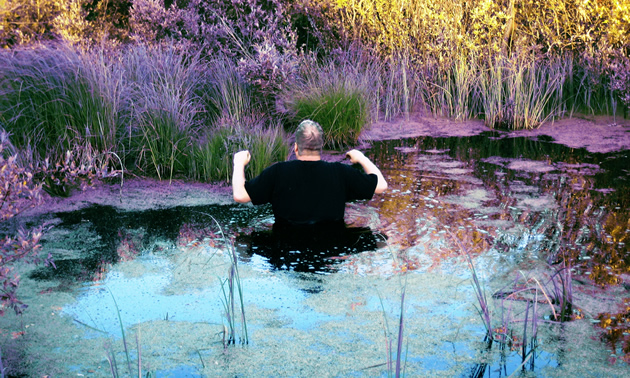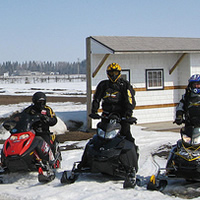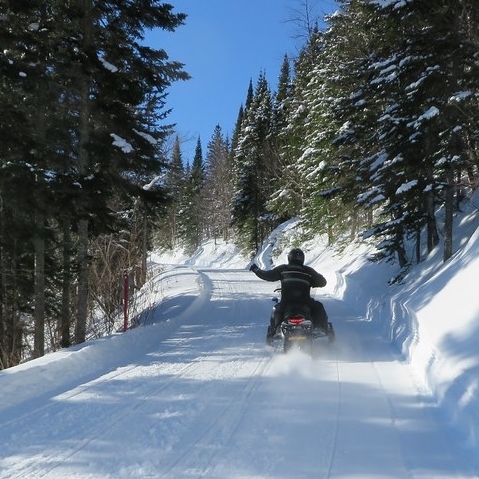Some things in Vegas may stay in Vegas, but when five enthusiastic treasure hunters from Alberta's Lakeland finish an ambitious geocaching project, Vegas will be left with one less claim to fame.
Danny Smyl, the president of the St. Paul Trailblazers snowmobile club, is an avid geocacher and one of five people in charge of building the world’s longest Geocache Power Trail—the Iron Horse Power Trail. When it is finished, thousands of geocaches will be hidden along 300 kilometres of prime ATVing and snowmobiling country on Alberta's Iron Horse Trail.
The group intends to place nearly 2,000 geocaches along the trail, stripping the current Power Trail champion—the E.T. Highway in central Nevada—of its worldly title, and leveraging the activity as a draw to the Lakeland region.
Smyl said geocaching is a remarkable tourist attraction because there are so many people worldwide that participate in it.
“People do trips just to do geocaches,” he said. “People like this location because they can book and rent quads or snow machines to ride the trail.”
Vicky and Gilles Lefebvre of the Lakeland Geochachers have just finished hiding caches along the first third of the Power Trail. Smyl and Marianne Price, administrative co-ordinator for the Iron Horse Trail, have taken on the second third—and Price and Vern Billey, president of the Smoky Lake Trail Twisters, are doing the third section.
It's a numbers game
A Power Trail is meant to offer easier, more closely spaced caches and is intended for cachers who want to get their numbers up, said Price. Spring and fall are currently the most popular times for geocaching, but winter draws its fair share of treasure hunters.
“Most are easy to find and accessible,” said Price. “It isn’t like you have to go wading around through waist-high snowbanks and bring a shovel. They are usually at least two or three feet off the ground and they are going to be close to the sides of the trail so people can get to them.”
Each third of the trail offers something a little different. Some caches are micros—small ones you just find and log your name into; some are waterproof plastic containers with items to trade, and others are camouflaged well enough to trick the keenest eye.
“Mine are all steel ammo boxes and have trinkets in them,” said Smyl. “They are always tough—never a 1/1 (the lowest difficulty rating); they are all 5/5s.”
Smyl’s caches might be “steep, mean and ugly,” he said, but people have already sworn to visit the trail specifically to meet the challenge.
“That’s part of the game,” said Price. “If you can’t find something today, you can always come back next week.”
The allure of hide and seek
The Lefebvres live in Cold Lake and were instrumental in getting the Iron Horse Power Trail started.
Alberta's Iron Horse Trail—which boasts over 300 kilometres of trail and 20 rest stops and staging areas—was a natural choice for a Power Trail. It is the longest continuous trail in the province and traverses 10 municipalities and a variety of eco-zones—from boreal forest to parkland to cultivated farmland.
It is unlike anything in the world as far as accessibility, versatility and natural beauty, said Vicky.
“It is something to do on the trail and the beauty is bar none,” she said.
They just completed one section of 517 geocaches stretching from Cold Lake to Abilene, and there was snow on the ground when they started, making it easier to find hiding places that will be accessible in the winter. Like those elsewhere along the trail, the caches tend to be at least two feet off the ground and located in trees, on fences or under bridges, said Vicky.
Cashing in on caching
Both Vicky and Gilles are veteran Power Trail cachers. Having conquered more than 1,000 caches in just over 14 hours on the Las Vegas trail, and powering through 800 on another trail in California, the pair have seen first-hand the benefit that geocaching brings to a community.
“We’re travelling there, renting vehicles, buying food and staying in hotels,” said Gilles.
A mega event called Best of the Bad in Three Hills, Alberta, involved the entire town, with 775 people swarming in to hunt for hundreds of caches. Camping areas, businesses and hotels participated, welcoming treasure hunters and planning mini events. Trails were organized for families, walkers, quad riders—there was even a train tour.
“It was all done up and phenomenal,” said Vicky. “We had a blast.”
The group has already received inquiries from geocachers across Canada, in the U.S. and from as far away as Ireland—all of whom can’t wait for the Power Trail’s completion, scheduled for November 30, 2011.
“It’s the notch in the belt thing and the excitement to be able to find and complete the trail,” said Price. “It is a huge tourist attraction, and as we get a little bit done, people are coming out. The trail is not accessible by vehicle, so they are looking for ATV and snowmobile rentals, staying at hotels and visiting the communities on the trail.”
Geocaching 101
Geocaching is a real-world, outdoor treasure-hunting game in which players try to locate hidden containers, called geocaches, using GPS-enabled devices and then share their experiences online.
The rules of geocaching are simple: if you take something from a geocache, leave something of equal or greater value; sign the logbook, and log your experience at http://www.geocaching.com There. is also a “cache in, trash out” policy and specific rules about private versus public property; these can be viewed at the above website.
Traditional geocaches come in all shapes and sizes—from “nanos” the size of a peanut to large bucket-sized treasures. Some simply contain a logbook to sign, others contain trinkets and items for trade.
Some geocaches look like rocks, pine cones or other natural items. Others contain “trackables” like Travel Bugs and Geocoins that have missions, instructions or destinations attached to them for an added element of interest.
Multi-caches involve multiple locations and clues; mystery or puzzle caches involve complicated puzzles; and event caches lead treasure hunters to organized geocaching events.






